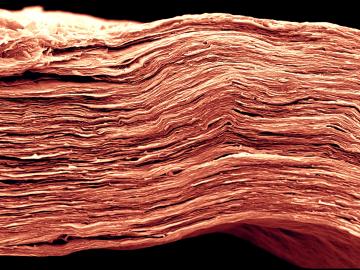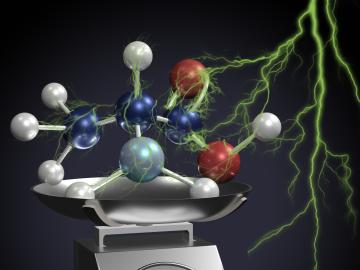
Filter News
Area of Research
- (-) Materials (52)
- (-) Sensors and Controls (2)
- Advanced Manufacturing (1)
- Biology and Environment (11)
- Computer Science (4)
- Electricity and Smart Grid (3)
- Energy Science (101)
- Energy Sciences (1)
- Functional Materials for Energy (2)
- Fusion and Fission (7)
- Isotopes (27)
- Materials for Computing (6)
- National Security (32)
- Neutron Science (9)
- Nuclear Science and Technology (10)
- Quantum information Science (2)
- Supercomputing (21)
News Topics
- (-) Cybersecurity (4)
- (-) Energy Storage (34)
- (-) Grid (6)
- (-) Isotopes (13)
- (-) Molten Salt (3)
- (-) Security (3)
- 3-D Printing/Advanced Manufacturing (23)
- Advanced Reactors (4)
- Artificial Intelligence (9)
- Big Data (2)
- Bioenergy (11)
- Biology (4)
- Biomedical (7)
- Buildings (5)
- Chemical Sciences (32)
- Clean Water (3)
- Composites (9)
- Computer Science (17)
- Coronavirus (4)
- Critical Materials (13)
- Environment (15)
- Exascale Computing (2)
- Frontier (3)
- Fusion (7)
- High-Performance Computing (4)
- Irradiation (1)
- ITER (1)
- Machine Learning (5)
- Materials (73)
- Materials Science (78)
- Mathematics (1)
- Microscopy (27)
- Nanotechnology (39)
- National Security (3)
- Neutron Science (33)
- Nuclear Energy (16)
- Partnerships (11)
- Physics (28)
- Polymers (17)
- Quantum Computing (3)
- Quantum Science (11)
- Simulation (1)
- Space Exploration (2)
- Summit (2)
- Transportation (14)
Media Contacts

A team of researchers at Oak Ridge National Laboratory have demonstrated that designed synthetic polymers can serve as a high-performance binding material for next-generation lithium-ion batteries.

Ionic conduction involves the movement of ions from one location to another inside a material. The ions travel through point defects, which are irregularities in the otherwise consistent arrangement of atoms known as the crystal lattice. This sometimes sluggish process can limit the performance and efficiency of fuel cells, batteries, and other energy storage technologies.


Oak Ridge National Laboratory scientists analyzed more than 50 years of data showing puzzlingly inconsistent trends about corrosion of structural alloys in molten salts and found one factor mattered most—salt purity.

OAK RIDGE, Tenn., Jan. 31, 2019—A new electron microscopy technique that detects the subtle changes in the weight of proteins at the nanoscale—while keeping the sample intact—could open a new pathway for deeper, more comprehensive studies of the basic building blocks of life.

Oak Ridge National Laboratory scientists studying fuel cells as a potential alternative to internal combustion engines used sophisticated electron microscopy to investigate the benefits of replacing high-cost platinum with a lower cost, carbon-nitrogen-manganese-based catalyst.
Physicists turned to the “doubly magic” tin isotope Sn-132, colliding it with a target at Oak Ridge National Laboratory to assess its properties as it lost a neutron to become Sn-131.

Scientists at the Department of Energy’s Oak Ridge National Laboratory used neutrons, isotopes and simulations to “see” the atomic structure of a saturated solution and found evidence supporting one of two competing hypotheses about how ions come

Oak Ridge National Laboratory scientists have developed a crucial component for a new kind of low-cost stationary battery system utilizing common materials and designed for grid-scale electricity storage. Large, economical electricity storage systems can benefit the nation’s grid ...

Brixon, Inc., has exclusively licensed a multiparameter sensor technology from the Department of Energy’s Oak Ridge National Laboratory. The integrated platform uses various sensors that measure physical and environmental parameters and respond to standard security applications.


